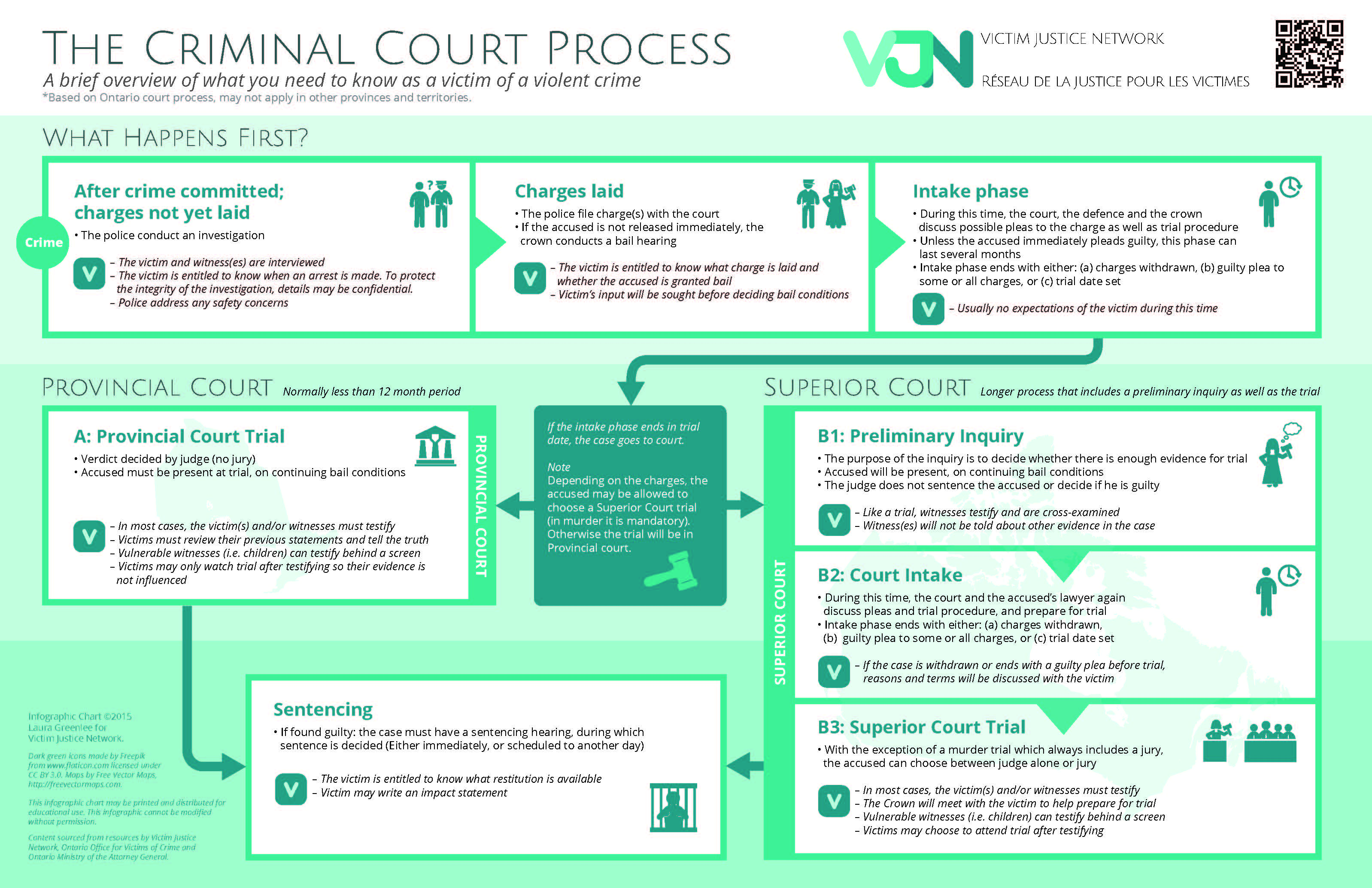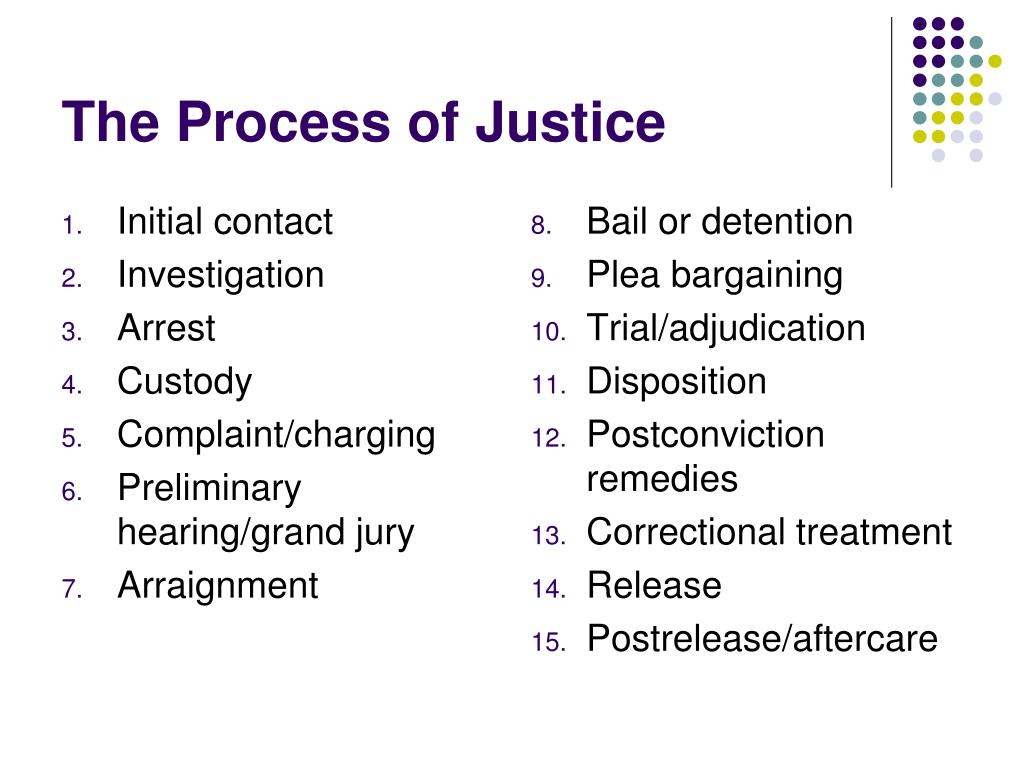Criminal Justice Process Steps
Criminal Justice Process Steps - Read about the trajectory of a criminal case, extending from arrest, arraignment, and indictment to trial, sentencing, and appeal. Each state has its own similar rules. Here's how the criminal process works—from investigation to arrest to a criminal charge and resolution. Some cases will be much simpler,. This article provides a general overview of the various steps, court hearings, and procedures that criminal prosecutions typically involve before the appeals stage. Most criminal cases end by plea bargaining and skip to the sentencing stage,. Criminal prosecution develops in a series of stages, beginning with an arrest and ending at a point before, during or after trial. The steps you will find here are not exhaustive. The typical life cycle of a criminal case varies. The majority of criminal cases terminate when a criminal defendant accepts a plea bargain offered by the prosecution.
The steps you will find here are not exhaustive. Some cases will be much simpler,. Read about the trajectory of a criminal case, extending from arrest, arraignment, and indictment to trial, sentencing, and appeal. Here's how the criminal process works—from investigation to arrest to a criminal charge and resolution. The federal rules for criminal cases can be found in the federal rules of criminal procedure, which govern all aspects of criminal trials. Criminal prosecution develops in a series of stages, beginning with an arrest and ending at a point before, during or after trial. The typical life cycle of a criminal case varies. This article provides a general overview of the various steps, court hearings, and procedures that criminal prosecutions typically involve before the appeals stage. Most criminal cases end by plea bargaining and skip to the sentencing stage,. The majority of criminal cases terminate when a criminal defendant accepts a plea bargain offered by the prosecution.
Each state has its own similar rules. Here's how the criminal process works—from investigation to arrest to a criminal charge and resolution. The typical life cycle of a criminal case varies. The majority of criminal cases terminate when a criminal defendant accepts a plea bargain offered by the prosecution. Read about the trajectory of a criminal case, extending from arrest, arraignment, and indictment to trial, sentencing, and appeal. Most criminal cases end by plea bargaining and skip to the sentencing stage,. Some cases will be much simpler,. Criminal prosecution develops in a series of stages, beginning with an arrest and ending at a point before, during or after trial. The steps you will find here are not exhaustive. This article provides a general overview of the various steps, court hearings, and procedures that criminal prosecutions typically involve before the appeals stage.
The U.S. Criminal Justice System
The steps you will find here are not exhaustive. The federal rules for criminal cases can be found in the federal rules of criminal procedure, which govern all aspects of criminal trials. Read about the trajectory of a criminal case, extending from arrest, arraignment, and indictment to trial, sentencing, and appeal. Here's how the criminal process works—from investigation to arrest.
Criminal Justice Process Storyboard Assignment
Most criminal cases end by plea bargaining and skip to the sentencing stage,. Here's how the criminal process works—from investigation to arrest to a criminal charge and resolution. Each state has its own similar rules. Criminal prosecution develops in a series of stages, beginning with an arrest and ending at a point before, during or after trial. The federal rules.
BC Prosecution Service Province of British Columbia
Here's how the criminal process works—from investigation to arrest to a criminal charge and resolution. The typical life cycle of a criminal case varies. Criminal prosecution develops in a series of stages, beginning with an arrest and ending at a point before, during or after trial. Each state has its own similar rules. The majority of criminal cases terminate when.
How the Criminal Justice System Works Jefferson County, WA
The federal rules for criminal cases can be found in the federal rules of criminal procedure, which govern all aspects of criminal trials. Criminal prosecution develops in a series of stages, beginning with an arrest and ending at a point before, during or after trial. Most criminal cases end by plea bargaining and skip to the sentencing stage,. The majority.
Court Process North Carolina Conference of District Attorneys
Criminal prosecution develops in a series of stages, beginning with an arrest and ending at a point before, during or after trial. Some cases will be much simpler,. The typical life cycle of a criminal case varies. The majority of criminal cases terminate when a criminal defendant accepts a plea bargain offered by the prosecution. This article provides a general.
Visual Chart of the Criminal Justic Process Criminal justice system
The majority of criminal cases terminate when a criminal defendant accepts a plea bargain offered by the prosecution. The federal rules for criminal cases can be found in the federal rules of criminal procedure, which govern all aspects of criminal trials. Read about the trajectory of a criminal case, extending from arrest, arraignment, and indictment to trial, sentencing, and appeal..
How the Criminal Justice Process Works Fannin County, Texas Criminal
This article provides a general overview of the various steps, court hearings, and procedures that criminal prosecutions typically involve before the appeals stage. The steps you will find here are not exhaustive. Each state has its own similar rules. Here's how the criminal process works—from investigation to arrest to a criminal charge and resolution. The majority of criminal cases terminate.
The Criminal Court Process A brief overview of what you need to know
This article provides a general overview of the various steps, court hearings, and procedures that criminal prosecutions typically involve before the appeals stage. Here's how the criminal process works—from investigation to arrest to a criminal charge and resolution. The typical life cycle of a criminal case varies. Criminal prosecution develops in a series of stages, beginning with an arrest and.
PPT Criminal Justice Process and Perspectives PowerPoint
Read about the trajectory of a criminal case, extending from arrest, arraignment, and indictment to trial, sentencing, and appeal. Some cases will be much simpler,. Most criminal cases end by plea bargaining and skip to the sentencing stage,. The steps you will find here are not exhaustive. The typical life cycle of a criminal case varies.
Know The process Placer County, CA
Here's how the criminal process works—from investigation to arrest to a criminal charge and resolution. The federal rules for criminal cases can be found in the federal rules of criminal procedure, which govern all aspects of criminal trials. Each state has its own similar rules. Read about the trajectory of a criminal case, extending from arrest, arraignment, and indictment to.
Some Cases Will Be Much Simpler,.
Here's how the criminal process works—from investigation to arrest to a criminal charge and resolution. Most criminal cases end by plea bargaining and skip to the sentencing stage,. This article provides a general overview of the various steps, court hearings, and procedures that criminal prosecutions typically involve before the appeals stage. The federal rules for criminal cases can be found in the federal rules of criminal procedure, which govern all aspects of criminal trials.
The Steps You Will Find Here Are Not Exhaustive.
The typical life cycle of a criminal case varies. Each state has its own similar rules. The majority of criminal cases terminate when a criminal defendant accepts a plea bargain offered by the prosecution. Read about the trajectory of a criminal case, extending from arrest, arraignment, and indictment to trial, sentencing, and appeal.







